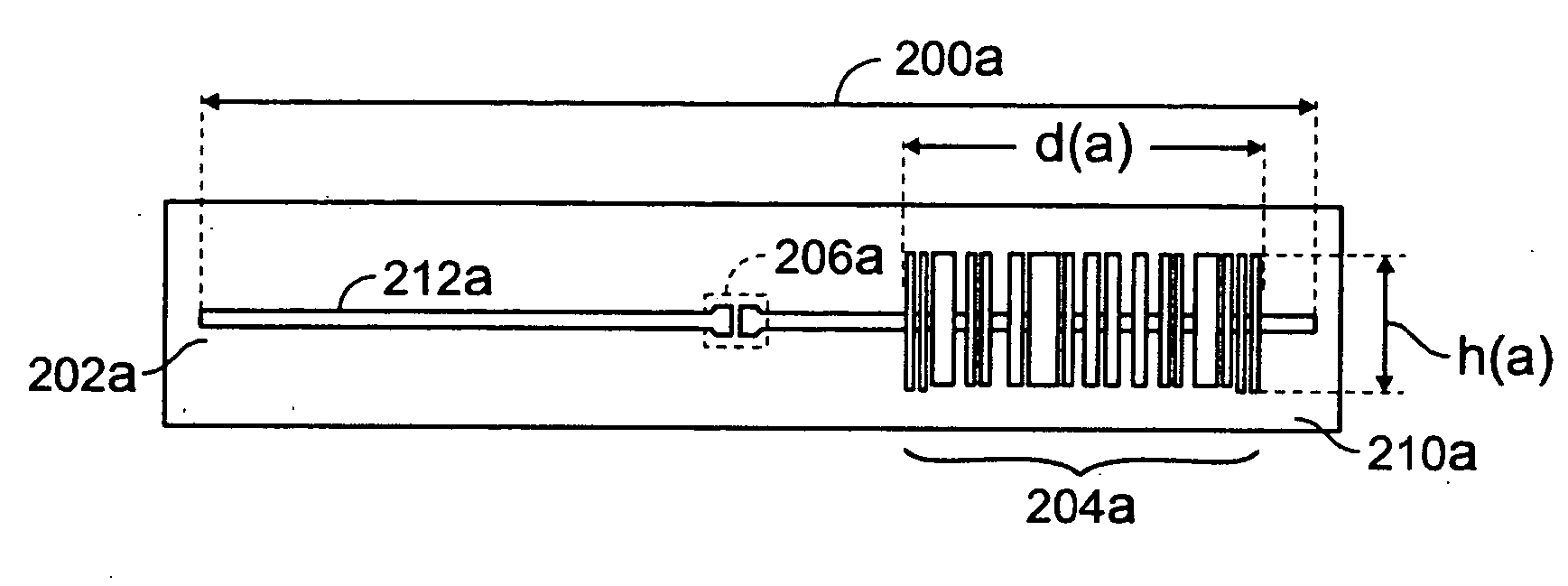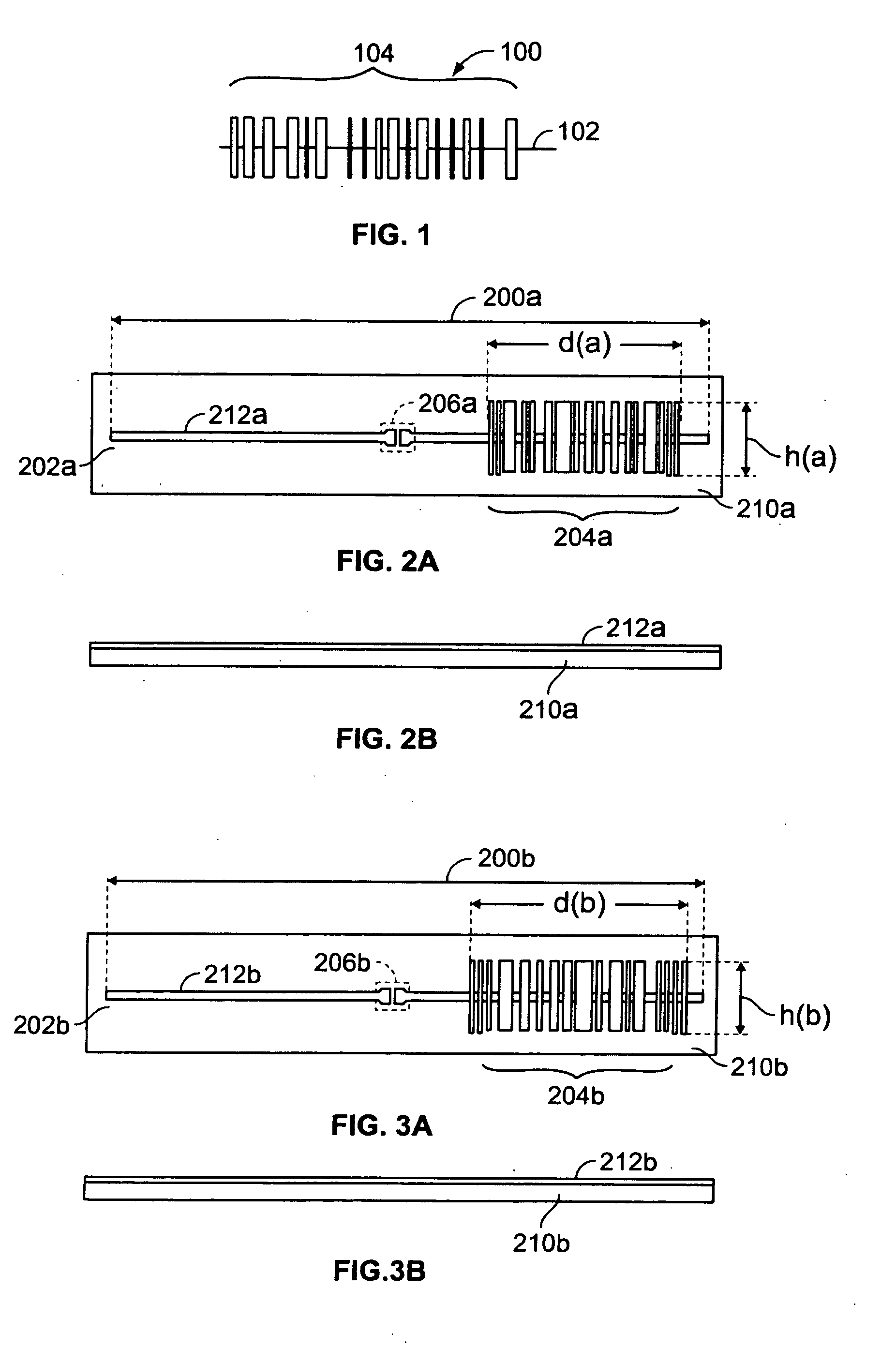RFID tag with antenna comprising optical code or symbol
a technology of optical code or symbol and antenna, which is applied in the field of antenna for an rfid transponder or tag, can solve the problems that prior art rfid devices may also lack distinctive and attractive looks, subject to certain limitations, etc., and achieve the effect of reducing the effective axial length of the antenna, reducing the resonant frequency of the antenna, and facilitating correction
- Summary
- Abstract
- Description
- Claims
- Application Information
AI Technical Summary
Benefits of technology
Problems solved by technology
Method used
Image
Examples
Embodiment Construction
[0023] The present invention provides an RFID tag with an antenna comprising an optical code or symbol, for example, a machine-readable bar code or human-readable text. In the detailed description that follows, like element numerals will be used to indicate like elements appearing in one or more of the figures.
[0024]FIG. 1 is a diagram showing an RFID tag antenna 100 configured as a machine-readable code in accordance with an embodiment of the present invention. In RFID antenna 100, horizontal line 102 denotes a transverse conductive trace and a series of vertical lines 104 connected by trace 102 are configured as an optical bar code. The length of the horizontal trace 102 determines the tag resonant frequency and the antenna gain. The series of vertical traces 104 may improve antenna bandwidth, but different vertical arrangements, so long as occupying the same area, should not appreciably change the antenna resonant frequency or gain of the illustrated design. For example, the spa...
PUM
 Login to View More
Login to View More Abstract
Description
Claims
Application Information
 Login to View More
Login to View More - R&D
- Intellectual Property
- Life Sciences
- Materials
- Tech Scout
- Unparalleled Data Quality
- Higher Quality Content
- 60% Fewer Hallucinations
Browse by: Latest US Patents, China's latest patents, Technical Efficacy Thesaurus, Application Domain, Technology Topic, Popular Technical Reports.
© 2025 PatSnap. All rights reserved.Legal|Privacy policy|Modern Slavery Act Transparency Statement|Sitemap|About US| Contact US: help@patsnap.com



